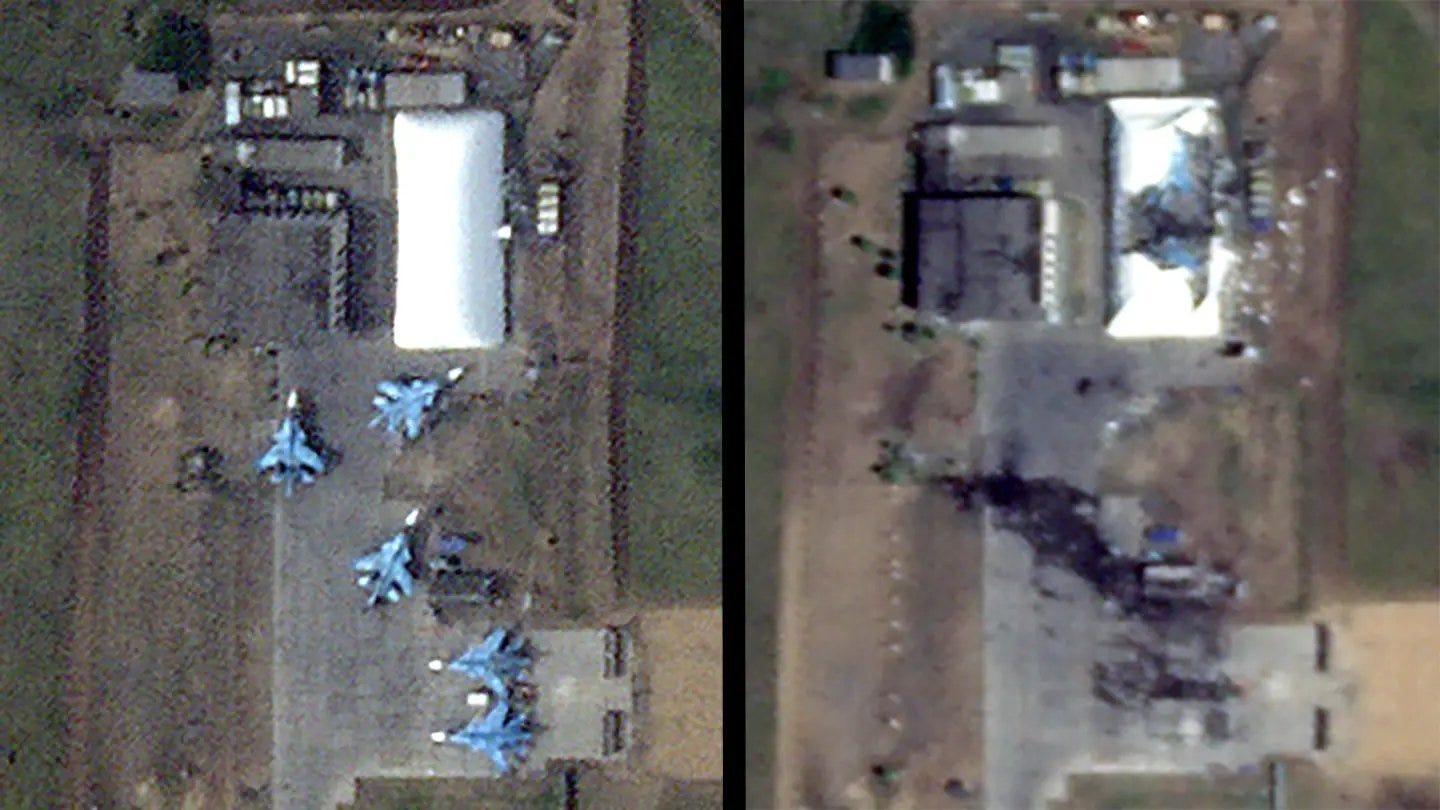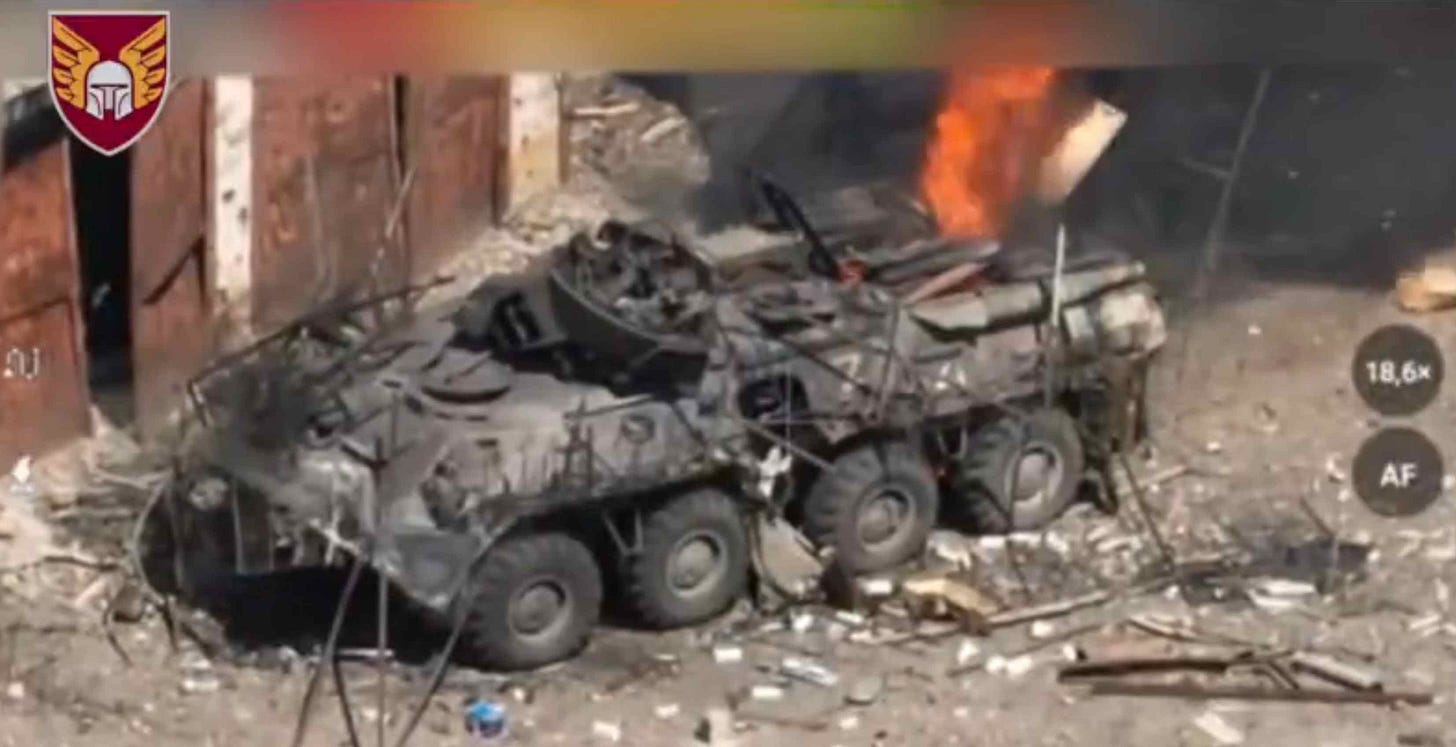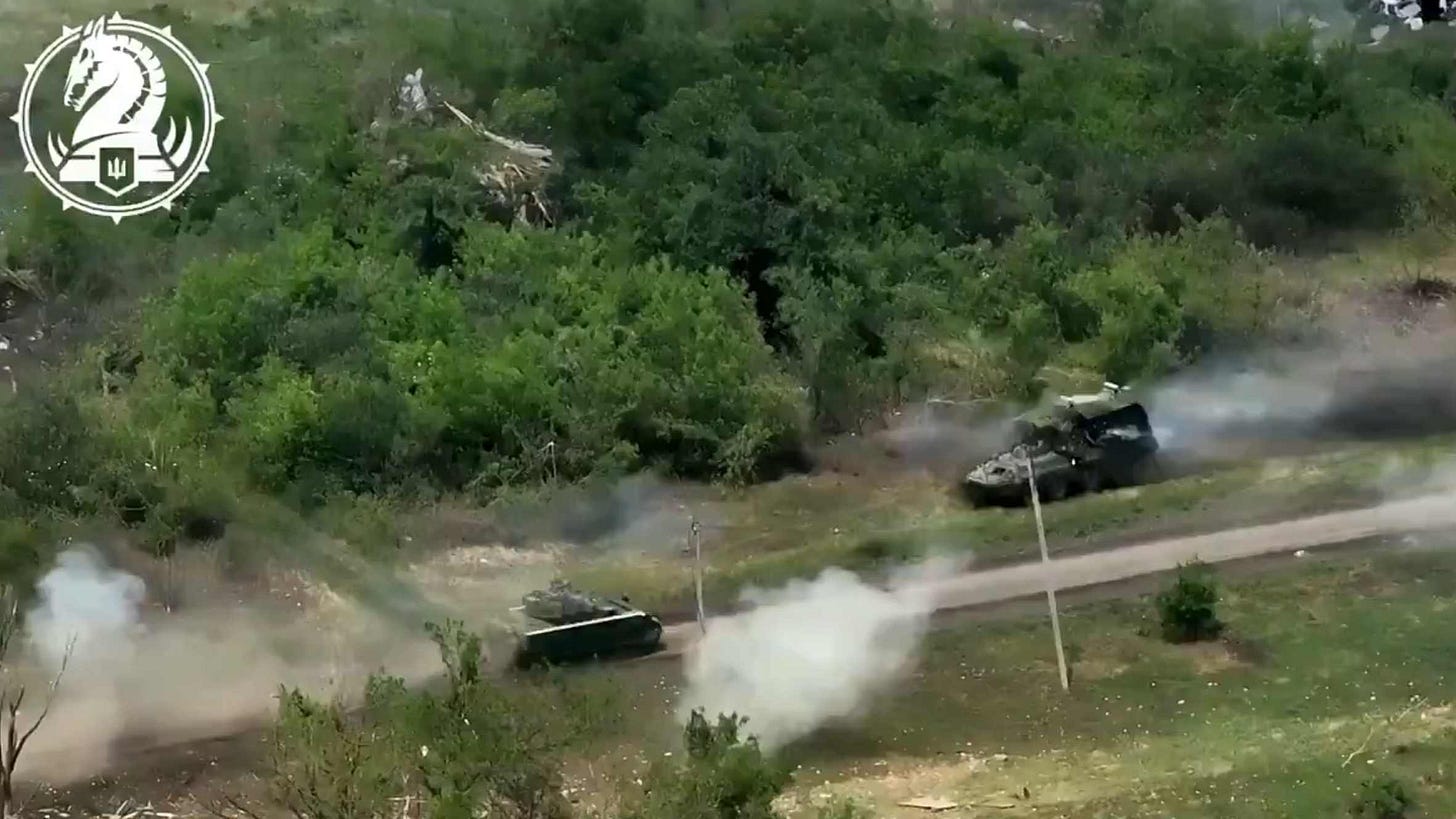Hello everybody!
Up front: I’ve got to stop posting links to my updates on the Facebook: I’m ‘temporarily blocked’ there all the time, every 1-2 minutes, just for trying to open my account and read reader’s reactions. Nothing else. And I grew tired of complaining: there’s no reaction at all. Seems, the owner of the Facebook finds it more important to earn another billion by firing people and using idiotic AIs than to keep his platform being of any kind of use. Thus, cannot but recommend everybody to completely switch here – i.e. to subscribe on my blog on the Substack (it’s for free) - so not to miss any of posts.
Back to what really matters…
As mentioned yesterday in the morning, Ukrainians have struck the Morozovsk AB in Russia with several UAVs (word is that up to 70 UAVs were used). Well, somebody bought the attached satellite photos and these are showing results:
- Hit on a maintenance hangar with two Su-34s inside
- Hit on a Su-34 parked in front of that hangar, too.
Also hit was an ammunition depot in Shebekino (Belgorod Oblast), reportedly storing rounds for TOS-1 systems. And the last night there was a big UAV-strike on one of industrial facilities in the Rostov-na-Donu area… heck: can’t open that post any more to make a screen-grab of the video because it was sent via the Messenger, and this is owned by the Facebook and Facebook’s idiotic AI is blocking me…
Another bit of news: back on 13 June, the Russians launched a major mechanised attack from (completely ruined) Mariinka into Heorhivka: the village immediately west of Mariinka.
This included a total of 28 BTR-82s, BMPs and MT-LBs. As far as is known by now, the 46th Airborne smashed 13 vehicles as these were moving along the Road O0510 and then into Heorhivka.
Now, in that, and in few other cases of the last few days, people watch ZSU-released videos and wonder: how comes the Russians are ‘moving freely inside Ukrainian positions’?
….i.e. inside areas marked as ‘controlled by Ukraine’ on the mass of maps published by war-mappers in the social media?
….and, how comes Ukrainians dig a trench complex and then nobody is inside when some Russian vehicle arrives to unload troops?
Well, boys and girls: that’s the same problem with all videos. They never show what happened before or after: only the 2, 5, 10, 15, perhaps 60 seconds they do show and nothing else… and thus they do not inform the viewer about what happened on the other 86,340 to 86,395 seconds of that day in the given area. Indeed, very few show even what happened to the left or right of the scene in question. And, hand on heart: it’s not like if all of us ‘war monitors’ are experts in ‘online video-analysis’ – based on, say, 15 years of intensive schooling in that discipline.
The most important part of what’s happening ‘during’ every such Russian attack is what’s happening BEFORE it’s launched. The Russians bomb, bomb, bomb and bomb Ukrainian positions they’re about to assault: they hit them with UMPK glide bombs, then shell them with artillery, they hit them by multiple rocket launchers, then they repeat the entire procedure. Then they do the same 2-3 times a day, seven days a week, and then several weeks in succession. Atop of that, they deploy 100+ UAVs a day to hit the Ukrainian positions. The ‘crowning’ of any such major onslaught is the TOS-1 barrage. Not from one launcher, but from an entire battery.
Thus, something like ‘Rule No. 1’ is that by the time the Russians actually assault and then the Ukrainians capture their attack on a video from some drone, the Russians have been shelling the area for hours, days, and weeks already.
The majority of battalion- and brigade-commanders in the ZSU has learned its lessons: they withdraw their troops and let the Russians bomb, shell, and strike with drones. Because there is no point in letting own troops getting killed for nothing in return. Exceptions from this rule are meanwhile rare.
Thus, and essentially: something like the ‘Rule No. 2’ is that out of an entire ZSU brigade of (usually) 4, 5, 6, 7, 8 battalions, only a ‘company or so’ of troops is ‘forward’: deployed inside positions along the immediate frontline to the Russians. The rest of the brigade is ‘in the rear’: hidden somewhere 200, 500, 1000, 5000 metres behind the frontline. Some are having their 2-3 days off, others are held in readiness. Of course: nothing of this is shown on a video.
Means: always keep on your mind that plenty of things have happened already long before some video was taken.
And then lots of other things happen while a video was taken, but are not visible on the video. As soon as Ukrainians (with help of constant monitoring of the Russian positions by their drones) see the Russians are launching an assault, they are launching their attack drones (usually FPVs), setting up their artillery barrage – and rushing their troops back into whatever was left of their positions. That’s something like the ‘Rule No. 3’.
Now, sometimes, the Russians are smashed by FPVs, artillery, and mines already before reaching the Ukrainian positions: then you see videos of their vehicles getting blown up while still travelling the fields separating their from Ukrainian positions. Other times the Russians get there around the same time Ukrainians are returning to their positions: then you can see such videos like two from the last week, where a Bradley of the 47th Mech is smashing two or more BTR-82s full of the Russian troops…
…and sometimes, the Russians are fast enough and – like in the case of their assault on Heorhivka – at least a part of their column survives for long enough to get into Ukrainian positions before Ukrainians can return there.
….and then there are some 100+ other variables for every of these ‘three principal versions’: because most often, it’s a combination of all of this that happens.
At least as important is what happens after a video showing some Russian vehicle was blown up. Sometimes, the surviving Russian troops are running back to their own positions; other times their commanders still have enough authority to keep on pushing them forward and thus they continue advancing on the Ukrainian positions; yet, other times they manage to reach – not yet re-occupied – Ukrainian positions on time, other times not etc.
One of least ‘flashy’ aspects of this war is the ‘newest’ version of the Russian tactics: the one where they send their assault groups: most of these get smashed. Really, I’ve lost the count alone of all the accounts from the last 7-10 days in which one survivor is telling about how out of 20 of troops in his assault squad, he is the only one still alive; or one of 2, 3, 5, 7 wounded and lucky to gets recovered from the battlefield.
Point is: it happens time and again, that the stream of Russian assault groups is going on for hours, even days, and then there are always a few survivors. They then sit down inside demolished Ukrainian positions or under destroyed vehicles… and that’s it: once inside, they’re not moving. They’re there: nominally, the position is ‘under their control’. Actually, it is not: they’re simply sitting there and can’t do nothing because as soon as they show themselves, they’re targeted by FPVs, or mortars, or even by artillery.
As said, the last few weeks, the Russian social media is full of stories of survivors of such assaults, most of them detailing how they’ve survived inside some hole for 3, 5, or more days. Literally ‘holed up’. Doing nothing but sitting there, hidden from Ukrainians. And: hey, there are there and as long as they are the Russians can say ‘they’re advancing’, they’ve ‘captured another position’, and Ukrainians can’t say they’re really in control of that position.
What happens next is then depending on lots of other factors. Provided they have the necessary situational awareness, the necessary shells, FPVs etc., there then follows the next phase, in which Ukrainian brigade- or battalion-commander is sending his troops to ‘mop up’: systematically return to their positions and k….kuddle – or, though rarely (because it’s still so that relatively few Russians are surrendering): capture – every Russian hidden inside some ruined position, trench complex, ruined house, or under some destroyed vehicle. Here an example from the northern Kharkiv area, recently:
Mind: such operations are extremely problematic and taking lots of time – and they are possible only if the Ukrainians have the necessary artillery-, mortar-, and FPV-support, AND TRAINING (still not 100% sure for all of ZSU units), to coordinate the knocking out of the Russian artillery and FPV-operators, so the infantry can move out and mop up some position. If not, then the position was lost and the Russians have ‘advanced again’, even if this often means ‘not at all’, at least ‘not for days longer’.
….though even if some position was lost on a specific video: mind, this doesn’t mean it’s ‘lost forever’. Sometimes it is, other times it is not.
In the case of Heorhivka, since two days, the ZSU is trying to mop up the surviving Russian troops inside the village. Sadly, this part of the frontline is not renowned for being something like ‘dominated’ by Ukrainian artillery and FPVs. On the contrary. Thus, this is going to take time and the outcome is anything else than certain: indeed, we’ll see what comes out.
…meanwhile, war mappers are simplifying the situation and declaring the village for ‘grey zone’, and people wonder ‘how could they’ve lost that position’….







Thanks, Tom, your context is really important as it explains the pressure that the Russians are trying to apply constantly. Their willingness to expend capital and people to do this is breathtaking! It’s only to be hoped that the Ukrainians ability to absorb this is supported by their “allies”, without them losing faith.
Good morning Tim,
many thanks for the update.
Would be interested in your take on the AB attack with the destroyed SU-34s. Reads to me like “a step in the right direction” in terms of overcoming air defenses around airbases, terminal guidance, etc.
Any conclusions you would draw at this point in time? Happy weekend!